Bonsai trees are a unique form of art that originated in Japan. The word ‘bonsai’ is derived from two Japanese words meaning ‘bon,’ which means tray or shallow dish, and ‘sai,’ which means plant or tree. Bonsai trees are essentially miniature trees that are grown in small pots, with their size and appearance carefully controlled through regular pruning and shaping.
🌳Here are 47 different types of bonsai trees you can start growing whether you are a beginner or an experienced bonsai artist.🌱
Japanese Maple Bonsai (Acer palmatum)
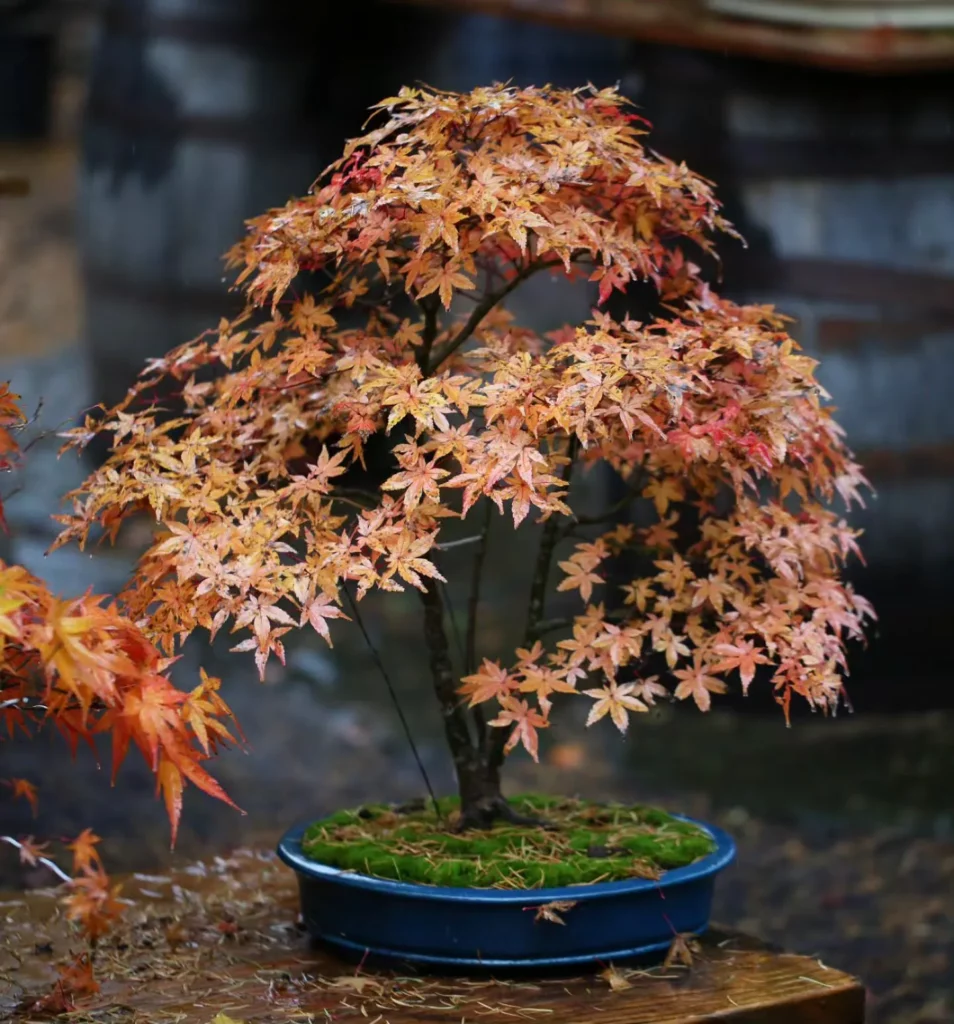

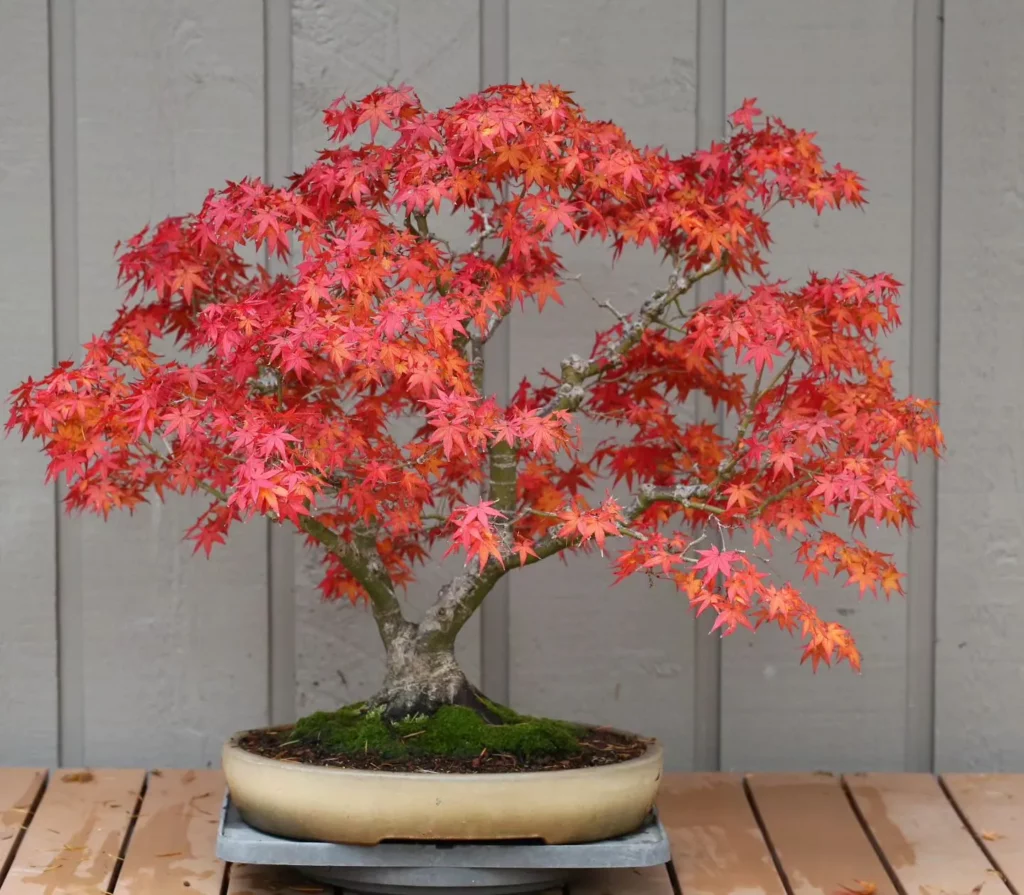
Japanese Maple Bonsai are prized for their stunning foliage and ability to adapt to various bonsai styles. Their vibrant colors in autumn make them a visual highlight in any collection. They are also relatively easy to care for, making them suitable for both beginners and experienced bonsai enthusiasts.
- Known for delicate leaves that change color with the seasons.
- Suitable for a variety of bonsai styles, including formal upright, informal upright, and cascade.
- Requires protection from strong sun and harsh winter conditions.
Chinese Elm Bonsai (Ulmus parvifolia)
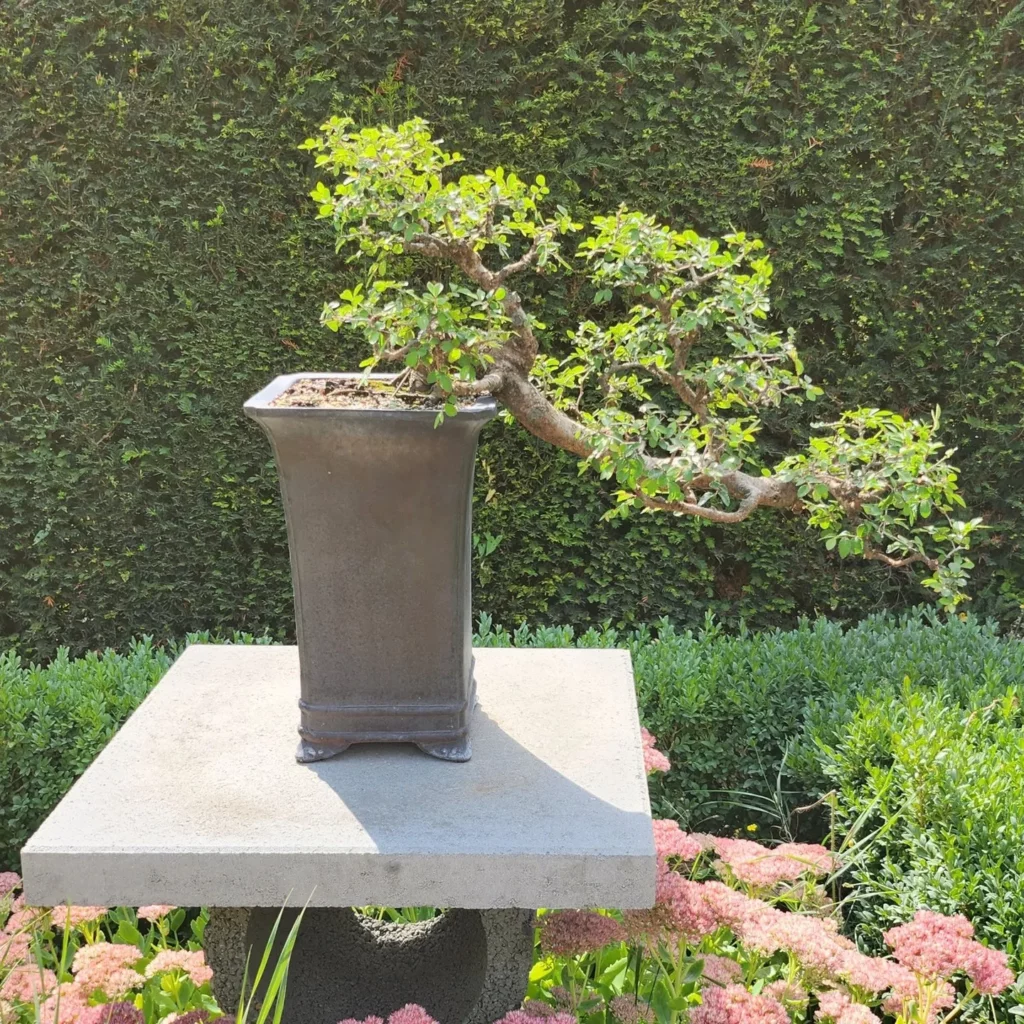
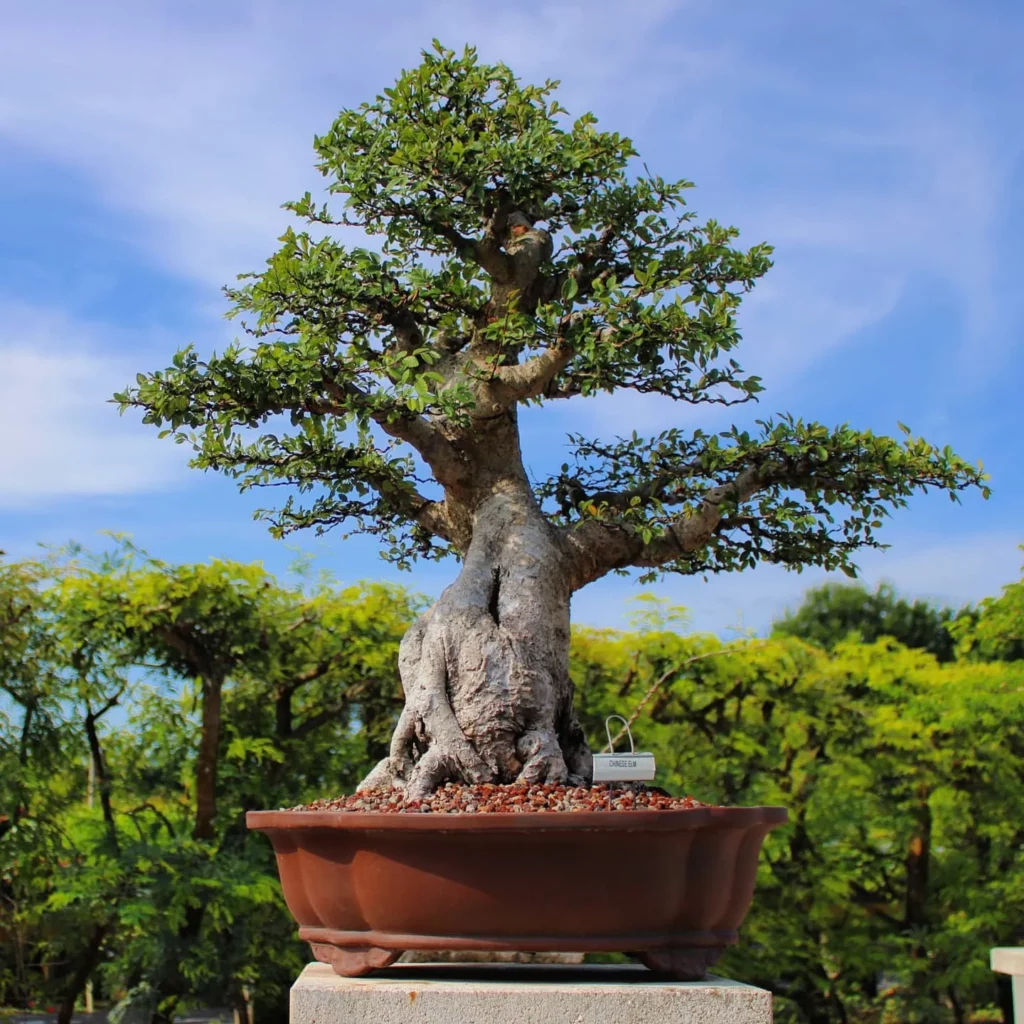

Chinese Elm Bonsai are known for their resilience and versatility. They are ideal for beginners due to their robust nature. Their attractive bark and small leaves make them visually appealing all year round.
- Possesses a beautiful, intricate bark pattern as it matures.
- Can be kept indoors or outdoors, adaptable to various climates.
- Tolerates pruning well, allowing for creative styling.
Weeping Willow Bonsai



Weeping Willow Bonsai are cherished for their elegant, drooping branches and distinctive appearance. They grow quickly and respond well to pruning, making them great for styling. Their fast growth also allows for visible progress, which is satisfying for collectors.
- Features long, narrow leaves that create a graceful, cascading effect.
- Prefers a lot of water, mimicking their natural habitat near rivers and lakes.
- Can be trained into various styles, including literati and informal upright.
Ficus Bonsai (Ficus spp.)



Ficus Bonsai are one of the most popular choices due to their tolerance of indoor conditions and robust growth. Their ability to produce aerial roots creates an exotic and tropical feel. They are also great for beginners because of their hardiness.
- Thrives in indoor environments with consistent temperatures.
- Can develop impressive root structures, including aerial roots.
- Leaves can be reduced through proper techniques, enhancing the miniature tree effect.
Juniper Bonsai (Juniperus spp.)
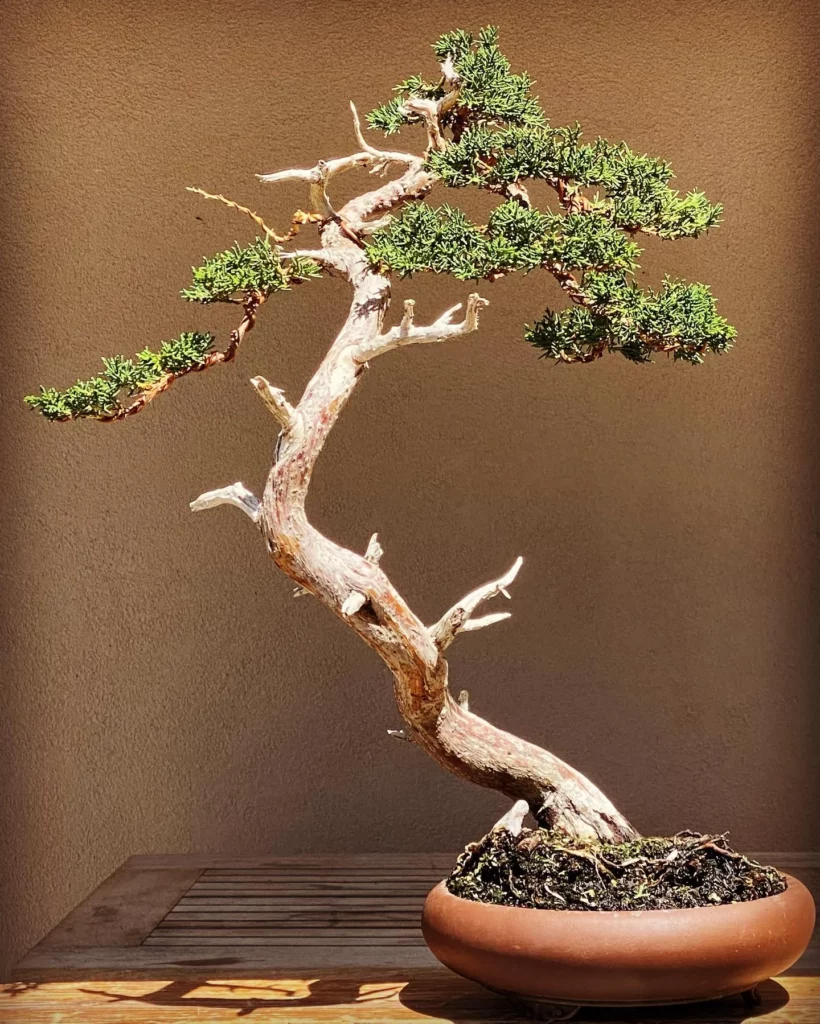
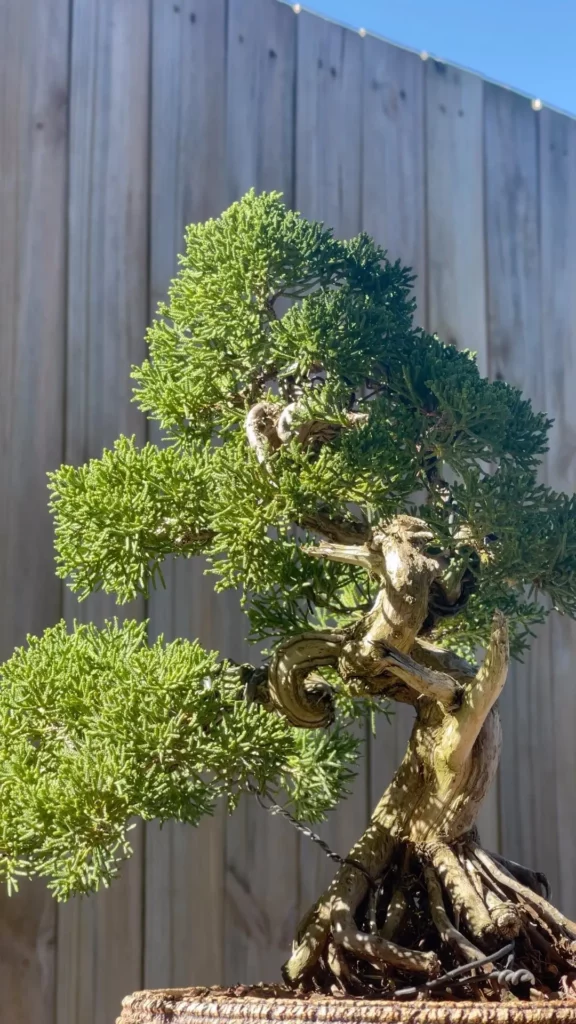
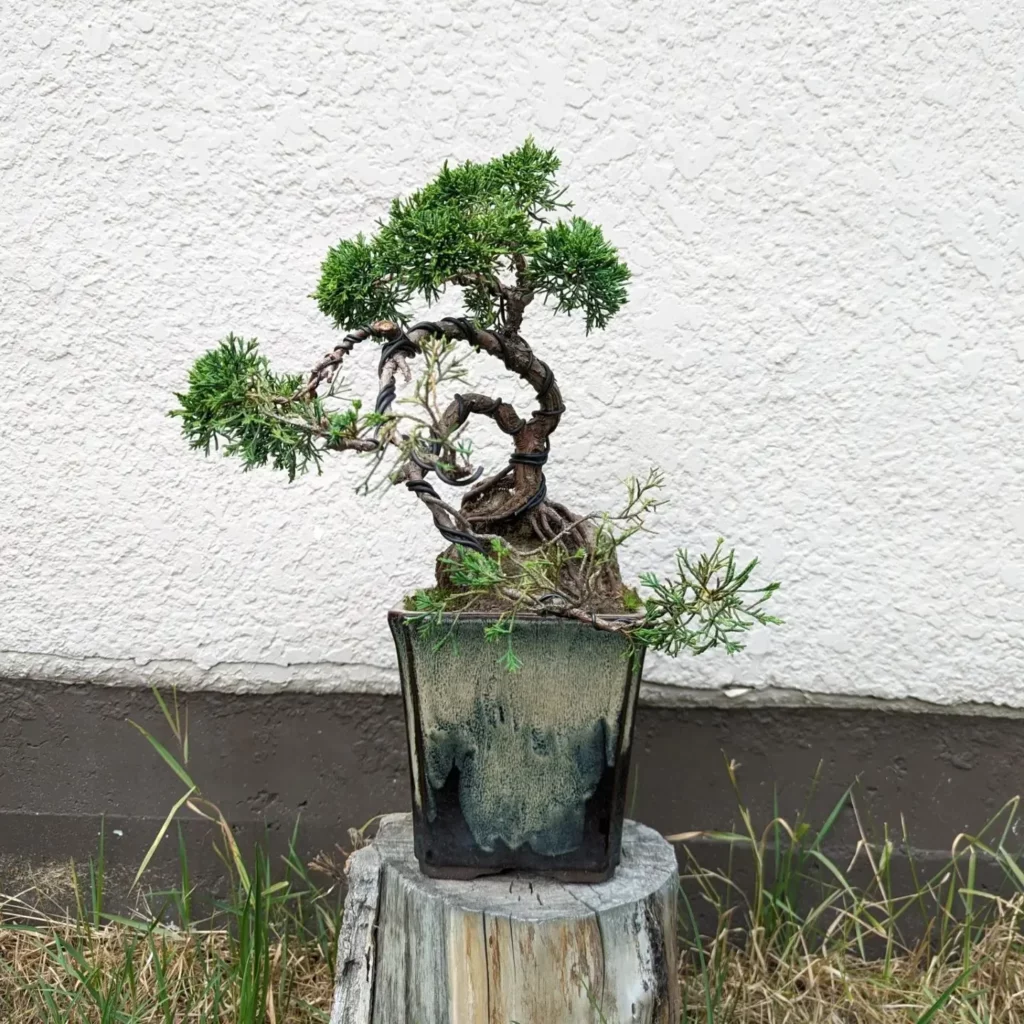
Juniper Bonsai are a classic choice for their aesthetic appeal and versatility. They are particularly valued for their needle-like foliage and woodsy aroma. These bonsai can be styled in almost any form, making them a favorite among creative enthusiasts.
- Ideal for a variety of styles, especially the cascade and literati forms.
- Requires full sun and well-draining soil.
- Foliage varies from soft to prickly, depending on the species.
Pine Bonsai (Pinus spp.)



Pine Bonsai are revered for their classic, rugged appearance and needle foliage. They symbolize longevity and strength in bonsai culture. Pines are also known for their ability to be shaped over time, offering a rewarding experience for patient collectors.
- Often used for formal and informal upright styles.
- Requires careful and strategic pruning to maintain shape and health.
- Prefers full sun and well-draining soil.
Boxwood Bonsai (Buxus spp.)



Boxwood Bonsai are admired for their dense, evergreen foliage and the ease with which they can be shaped. Their slow growth rate makes them particularly manageable for beginners. These bonsai are also highly resilient, adapting well to various climates.
- Known for small, lush green leaves and woody stems.
- Can be styled in various forms, including formal upright and forest groupings.
- Tolerates both full sun and partial shade, adaptable to indoor and outdoor environments.
Trident Maple Bonsai (Acer buergerianum)

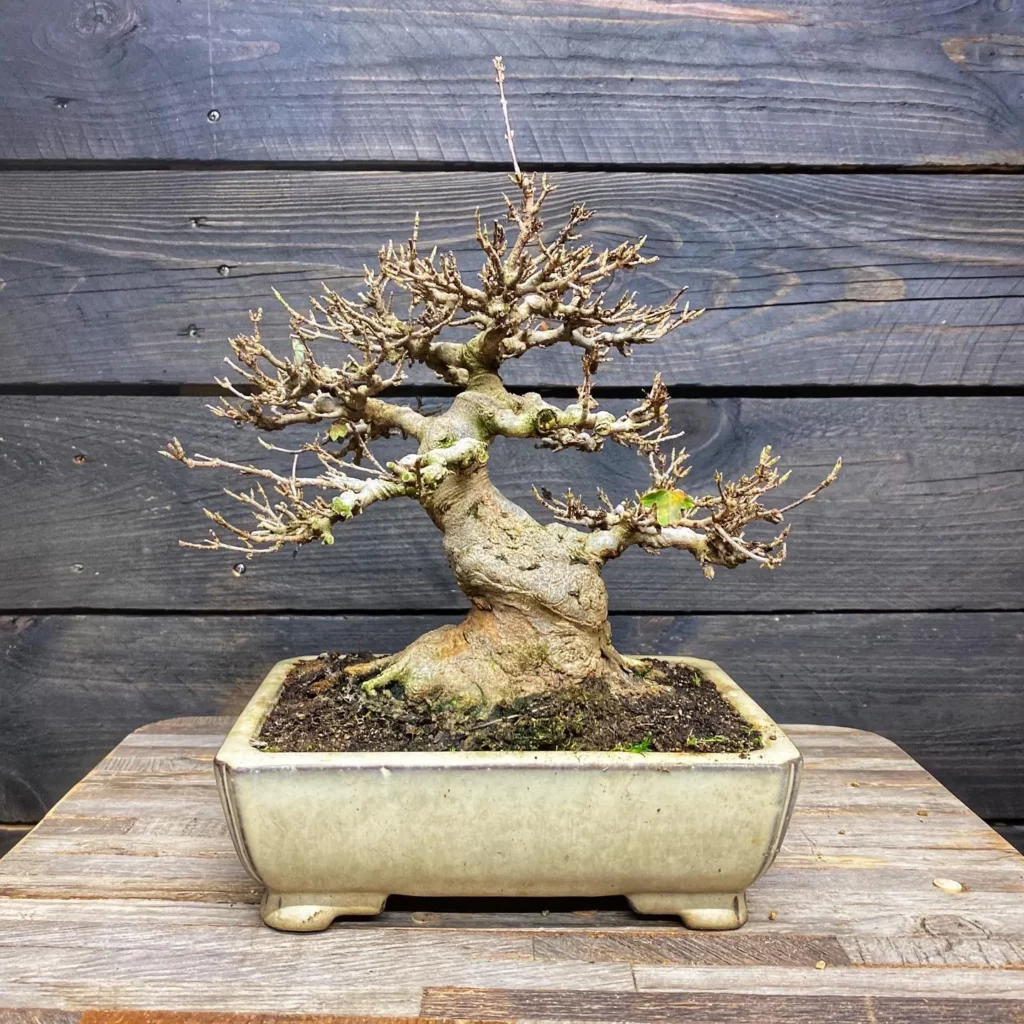

Trident Maple Bonsai are popular for their fast growth and vibrant fall colors. Their thick, textured bark and ability to develop a robust root system quickly make them a fascinating subject for bonsai. These trees are particularly good for practicing advanced techniques like air layering.
- Exhibits attractive three-lobed leaves.
- Ideal for creating a thick, tapering trunk.
- Requires protection from extreme cold.
Serissa Bonsai (Serissa foetida)



Serissa Bonsai, often called the “Thousand Stars,” are favored for their small leaves and profuse white flowers. They are great for creating a miniature tree effect. However, they can be challenging due to their sensitivity to environmental changes.
- Blooms small, star-shaped flowers throughout the year in ideal conditions.
- Prefers consistent moisture and good drainage.
- Sensitive to changes in temperature and watering, requiring attentive care.
Bald Cypress Bonsai (Taxodium distichum)



Bald Cypress Bonsai are unique in their ability to grow “knees,” or root protrusions, and shed leaves in the winter. These characteristics make them interesting and dynamic bonsai subjects. They are well-suited to wet conditions, mimicking their natural swamp habitats.
- Develops a fluted, buttressed trunk and feathery foliage.
- Can be styled in traditional and unique forms, including flat-top and swamp styles.
- Loves water, can even be grown in standing water.
Japanese Black Pine Bonsai (Pinus thunbergii)



Japanese Black Pine Bonsai are highly prized for their rugged, natural appearance and pine needle foliage. They are particularly suited to the informal upright style. These bonsai require patience and careful cultivation, making them a rewarding challenge for serious enthusiasts.
- Known for its strong trunk and branches.
- Requires regular maintenance, including needle plucking and branch wiring.
- Prefers full sun and well-draining soil.
Satsuki Azalea Bonsai (Rhododendron indicum)



Satsuki Azalea Bonsai are celebrated for their spectacular blooms, which come in various colors and patterns. They offer a unique opportunity for bonsai artists to work with flowering trees. These bonsai require acidic soil and careful pruning.
- Produces vibrant flowers in late spring.
- Prefers acidic soil and regular fertilization.
- Requires protection from freezing temperatures.
Cotoneaster Bonsai (Cotoneaster spp.)
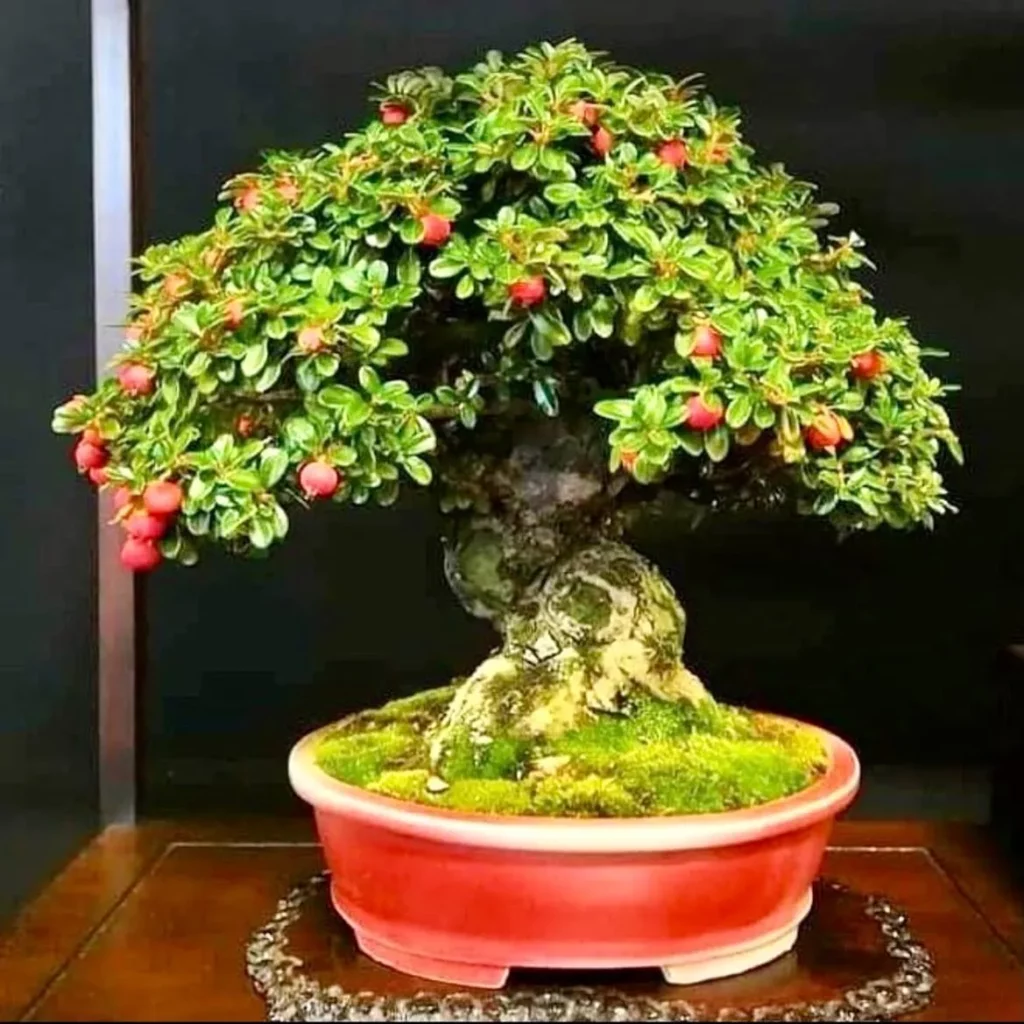
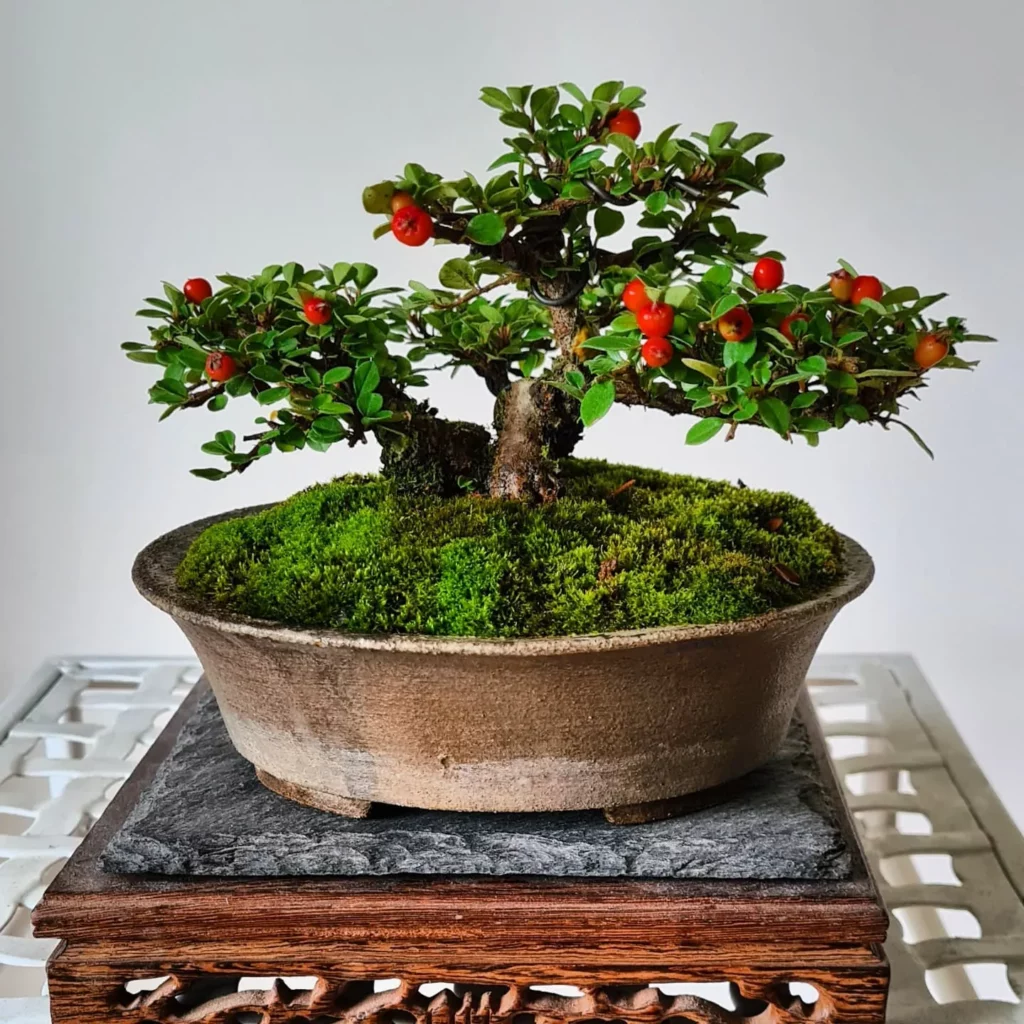
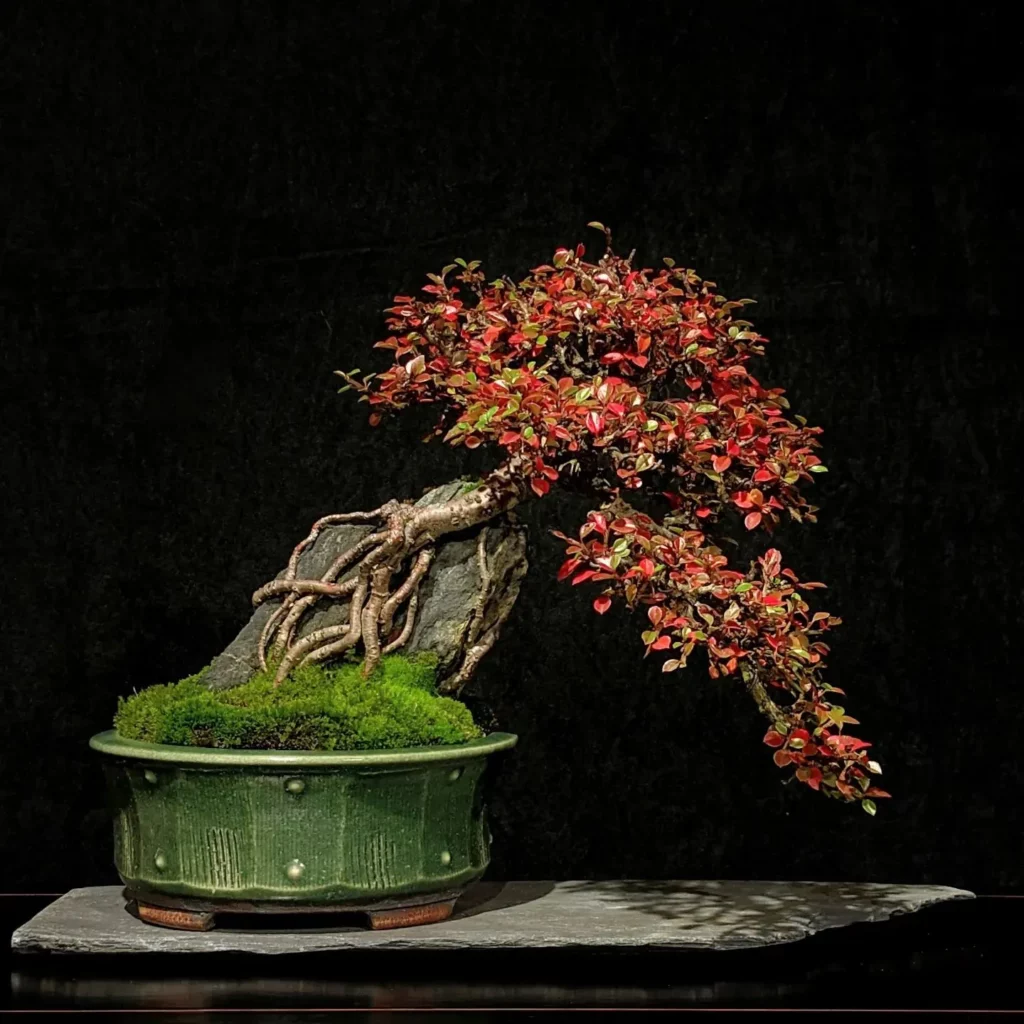
Cotoneaster Bonsai are admired for their small, glossy leaves, and attractive berries. They are relatively easy to care for, making them suitable for beginners. These bonsai can be styled in a variety of forms, including cascades and informal upright.
- Adaptable to various training techniques.
- Can produce small, pink flowers followed by red berries.
- Prefers full sun but can tolerate partial shade.
Portulacaria Afra Bonsai (Elephant Bush or Dwarf Jade)



Portulacaria Afra, also known as Elephant Bush or Dwarf Jade, is popular for its succulent leaves and woody stems, making it an ideal candidate for bonsai. It’s a great choice for beginners due to its robustness and low water requirements.
- Tolerates a wide range of indoor conditions.
- Can survive long periods without water, perfect for drought-tolerant bonsai.
- Responds well to pruning, allowing for creative shaping.
Olive Bonsai (Olea europaea)



Olive Bonsai are valued for their ancient appearance, gnarled trunks, and silvery leaves. They are symbols of peace and longevity, making them a meaningful addition to any collection. These trees thrive in sunny conditions and are relatively easy to maintain.
- Can produce small, fragrant flowers and miniature olives under the right conditions.
- Prefers a sunny position and well-draining soil.
- Drought-tolerant once established, requiring minimal water.
Chinese Sweet Plum Bonsai (Sageretia theezans)



Chinese Sweet Plum Bonsai are known for their small leaves, delicate flowers, and sweet fruits. This bonsai is particularly popular due to its ease of care and attractive appearance. It’s a great choice for indoor bonsai cultivation.
- Produces tiny white flowers followed by small, edible fruits.
- Responds well to pruning and wiring, making it ideal for shaping.
- Prefers bright, indirect light and consistent moisture.
Ginkgo Bonsai (Ginkgo biloba)



Ginkgo Bonsai, with their unique fan-shaped leaves, offer a distinctive aesthetic. These trees are known for their resilience and longevity, making them a symbol of endurance in bonsai culture. They are particularly striking in the fall when their leaves turn bright yellow.
- One of the oldest living tree species.
- Requires well-draining soil and moderate watering.
- Best suited to outdoor conditions with plenty of sunlight.
Redwood Bonsai (Metasequoia glyptostroboides)



Redwood Bonsai, particularly the Dawn Redwood, are known for their fast growth and striking appearance. They are a favorite among bonsai enthusiasts for their coniferous foliage and the ability to create impressive forest groupings.
- Deciduous conifer, losing its leaves in winter.
- Prefers moist soil and full to partial sun exposure.
- Can grow quite large, making them suitable for larger bonsai displays.
Chinese Quince Bonsai (Pseudocydonia sinensis)


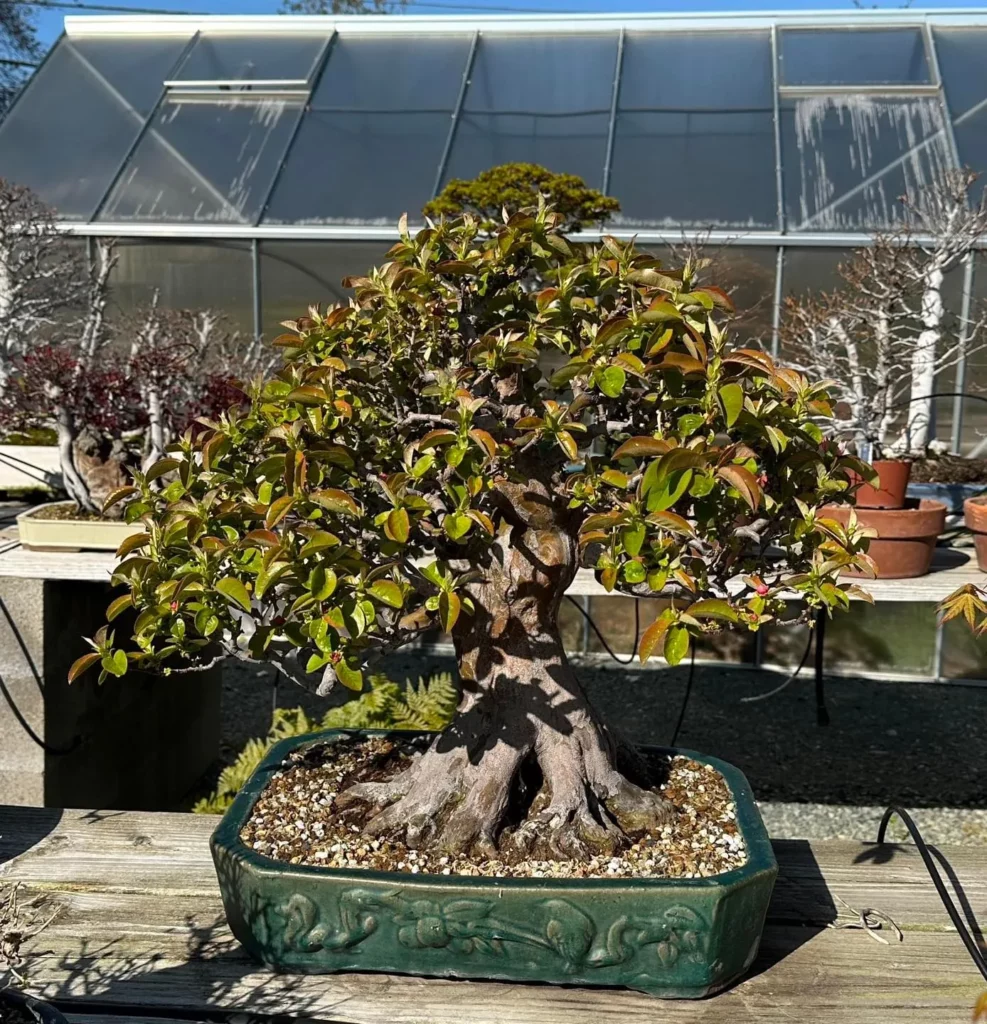
Chinese Quince Bonsai are appreciated for their attractive bark, beautiful blossoms, and edible fruit. They offer a unique challenge due to their slow growth, but this makes them all the more rewarding for patient collectors.
- Produces fragrant pink or white flowers in spring.
- Requires well-draining soil and regular pruning.
- Can produce quince fruits which are both decorative and edible.
Pomegranate Bonsai (Punica granatum)



Pomegranate Bonsai are sought after for their showy flowers and miniature fruits. They are a symbol of prosperity and abundance, making them a popular choice for bonsai enthusiasts. These trees prefer a warm, sunny climate.
- Can produce bright red flowers and miniature pomegranates.
- Requires full sun and well-draining soil.
- Prone to under-watering, so consistent moisture is key.
Hornbeam Bonsai (Carpinus spp.)



Hornbeam Bonsai are known for their attractive foliage and smooth, grey bark. They are a popular choice in bonsai due to their resilience and adaptability to various styles. These trees are particularly beautiful in the fall when their leaves change color.
- Ideal for both formal and informal styles.
- Requires regular pruning to maintain shape and encourage dense foliage.
- Prefers moist, well-draining soil and partial sun.
Wisteria Bonsai (Wisteria spp.)



Wisteria Bonsai are renowned for their stunning, cascading flowers and sweet fragrance. These bonsai are a challenge to grow but are highly rewarding with their spectacular flowering displays. They require careful pruning and training.
- Can take several years to bloom, requiring patience.
- Needs full sun for best flowering.
- Requires regular pruning to control growth and promote flowering.
Shimpaku Juniper Bonsai (Juniperus chinensis ‘Shimpaku’)
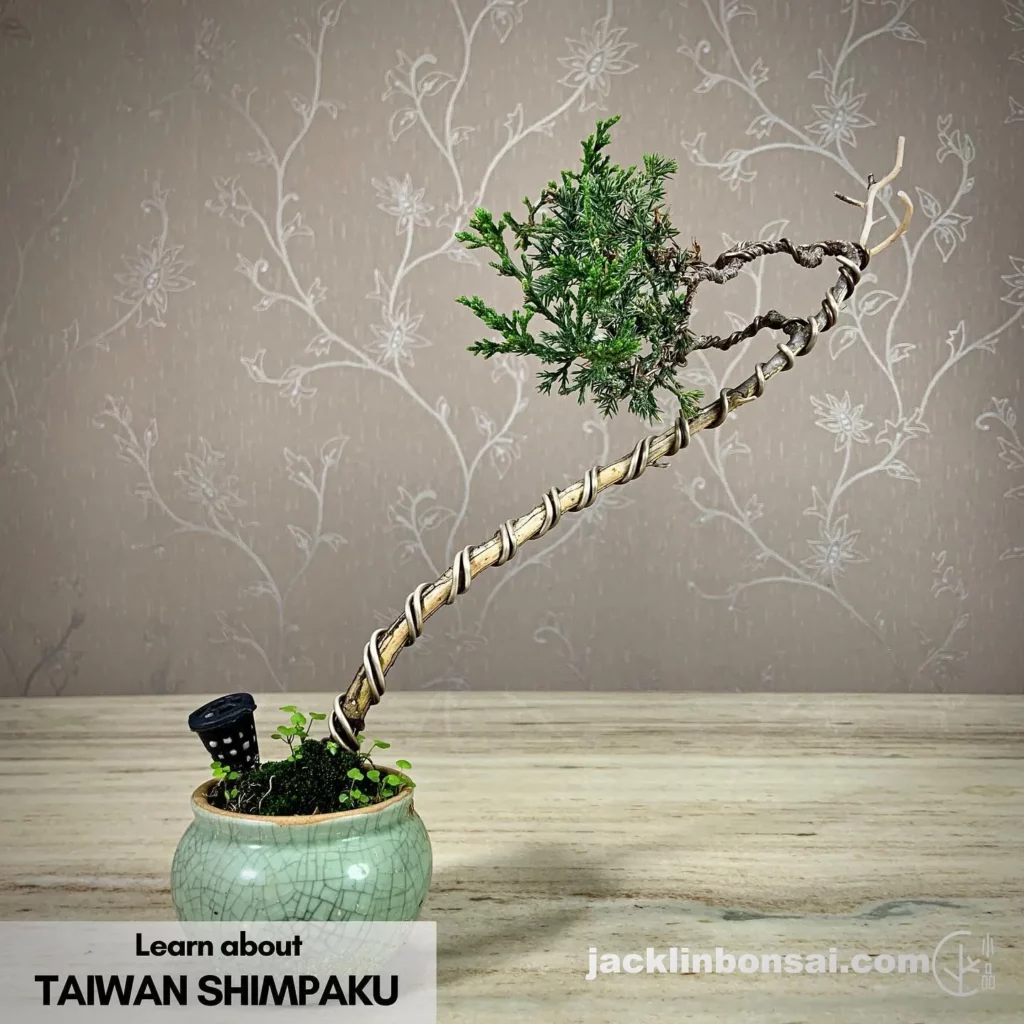
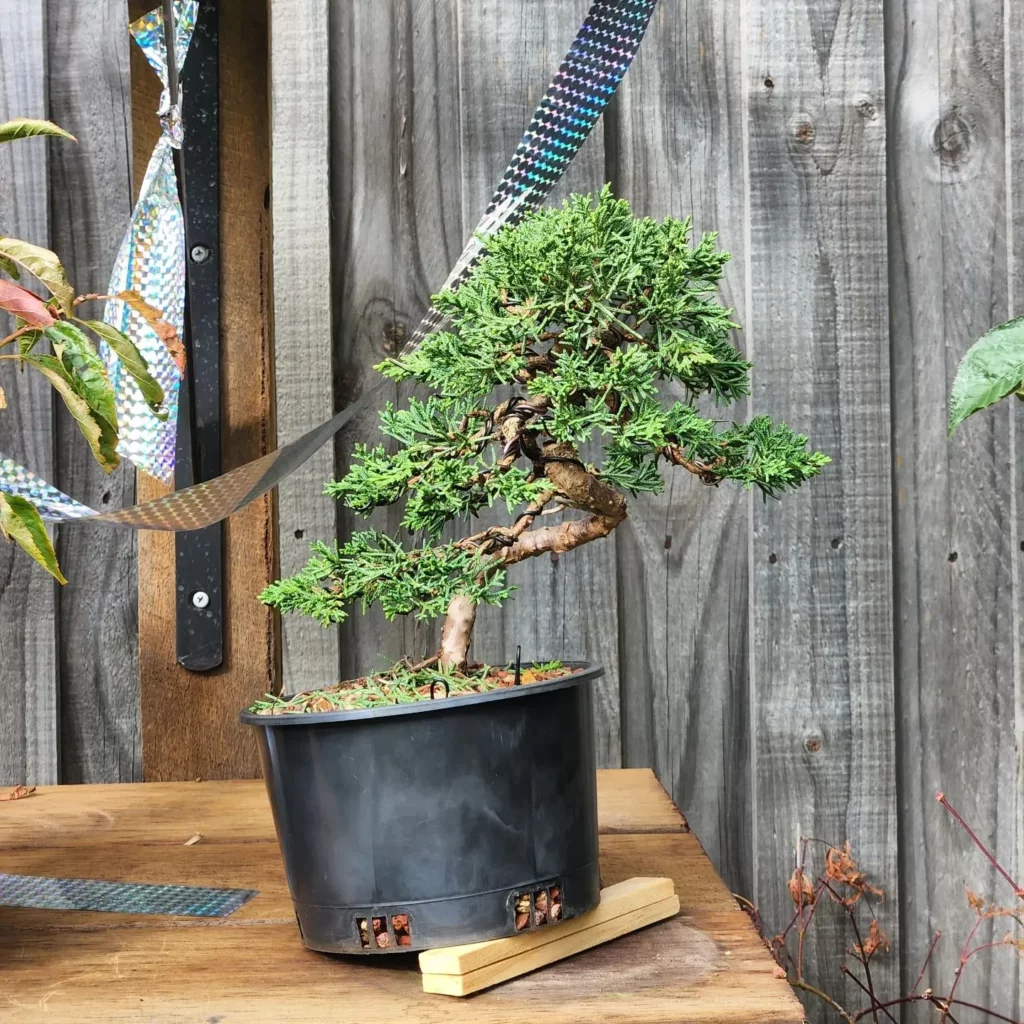

Shimpaku Juniper Bonsai is a classic choice for bonsai enthusiasts, valued for its lush, green foliage and flexible branches. This variety is particularly adaptable to various bonsai styles and is known for its ease of training.
- Ideal for creating intricate and artistic bonsai forms.
- Prefers outdoor conditions with full sun or partial shade.
- Requires well-draining soil and moderate watering.
Cork Bark Elm Bonsai (Ulmus parvifolia ‘Corticosa’)

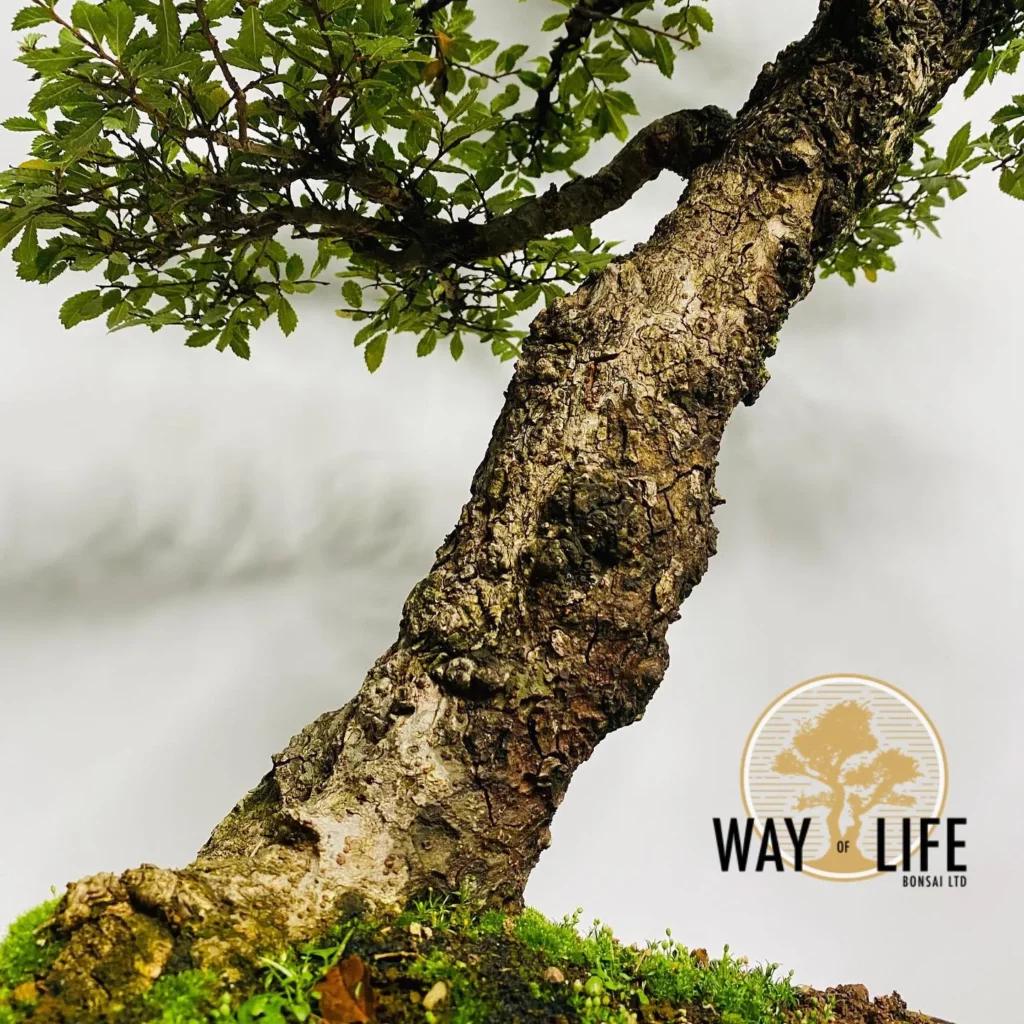
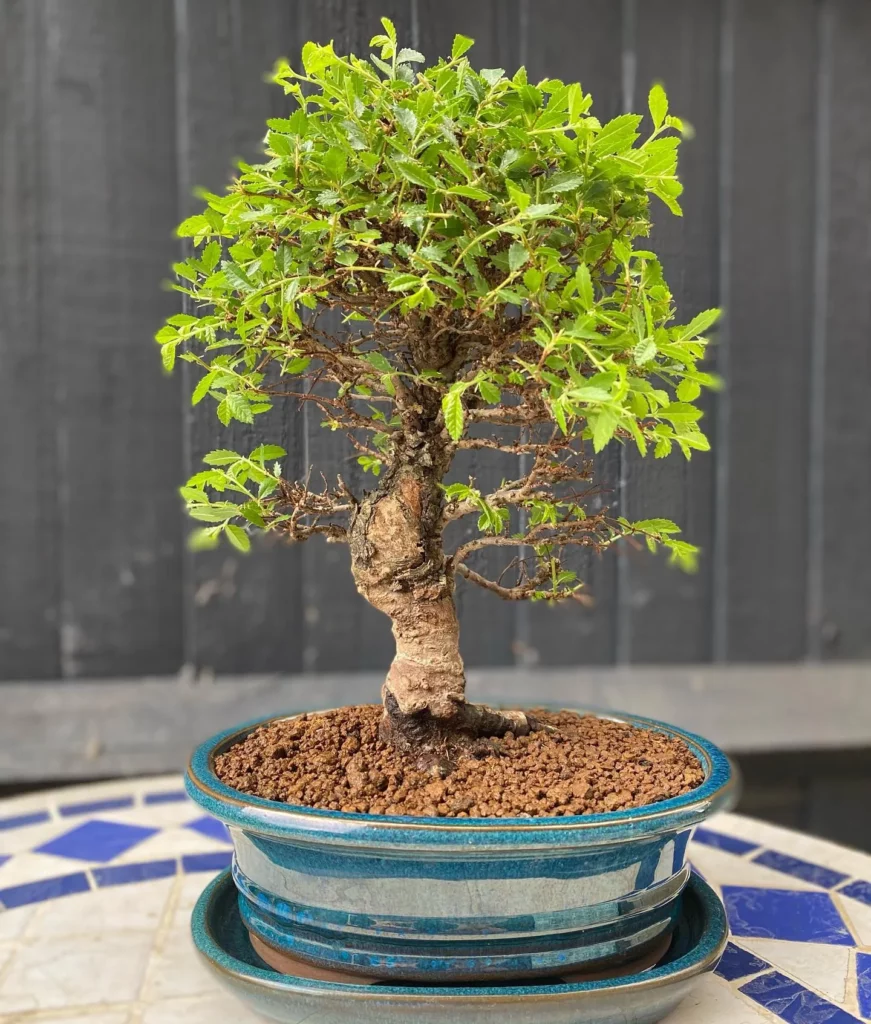
Cork Bark Elm Bonsai are unique for their thick, cork-like bark and small leaves. This variety is particularly hardy and adaptable, making it a great choice for both beginners and experienced bonsai artists.
- Resilient to various climates and conditions.
- Can be trained into numerous bonsai styles.
- Requires regular pruning to maintain its miniature form.
Japanese White Pine Bonsai (Pinus parviflora)



Japanese White Pine Bonsai are admired for their elegant, needle-like foliage and graceful growth habit. They are a symbol of peace and longevity in bonsai culture and are known for their slow growth and longevity.
- Requires well-draining soil and full sun exposure.
- Ideal for formal upright, informal upright, and slanting styles.
- Pruning and wiring techniques are essential for maintaining its shape.
Japanese Cedar Bonsai (Cryptomeria japonica)



Japanese Cedar Bonsai, also known as Sugi, are known for their unique, spirally arranged foliage and majestic appearance. These trees are a traditional choice in Japanese bonsai and offer a distinct aesthetic.
- Prefers moist, well-draining soil and partial to full sun.
- Can be trained into various styles, including formal upright and group plantings.
- Requires regular maintenance to manage growth and shape.
Korean Hornbeam Bonsai (Carpinus turczaninowii)



Korean Hornbeam Bonsai are favored for their fine, serrated leaves and attractive, smooth bark. They are especially stunning in the fall when their foliage turns to brilliant shades of red and orange. These bonsai are well-suited to a variety of styles and are relatively easy to care for.
- Ideal for formal and informal upright styles.
- Requires moderate watering and prefers well-draining soil.
- Needs protection from extreme cold in winter.
Brazilian Rain Tree Bonsai (Pithecellobium tortum)



The Brazilian Rain Tree is popular in tropical bonsai for its unique characteristics, such as the movement in its trunk and branches, and its leaves that close up at night. This species is especially favored for its responsiveness to bonsai techniques.
- Features a dynamic, twisting trunk and delicate, compound leaves.
- Prefers bright light and high humidity.
- Responsive to pruning, making it ideal for shaping and styling.
The Art of Bonsai
There are many different types of bonsai trees available, each with their own unique characteristics, care requirements, and aesthetic appeal. Understanding the different types of bonsai trees can help you choose a tree that suits your preferences and skill level as well as provide insight into how to care for it properly.
For instance, some bonsais prefer more sunlight than others while some do better in humid climates rather than dry ones. Similarly, there are species that require frequent watering while others don’t need it as much.
It’s also important to understand that not all bonsais require the same amount of time and attention when it comes to pruning and shaping. Some may need constant attention while others only require minimal upkeep once they have reached their desired shape.
The Benefits Of Growing Bonsai Trees
Growing bonsai trees has numerous benefits, from improving mental health to developing an appreciation for nature. Since bonsais require regular care and maintenance, it can be a relaxing and meditative hobby that helps reduce stress and anxiety.
Furthermore, the process of growing and shaping a bonsai tree requires patience, discipline, and attention to detail. It can help develop these qualities in individuals while also providing a sense of accomplishment when seeing the results of their hard work.
In addition to personal benefits, growing bonsai trees can also benefit society by contributing to environmental conservation efforts. By growing miniature trees in pots, it reduces the carbon footprint that would normally have been left by conventional gardening practices.
Conclusion
Bonsai trees come in many different shapes, sizes, and varieties – each with its own unique beauty and challenges. It is important to understand the characteristics of each type of tree before beginning cultivation to ensure that proper care is given.
Traditional bonsais such as juniper and pine are reliable choices for beginners looking to start their collections. Flowering bonsais like cherry blossom or wisteria add color and visual interest, while fruit-bearing trees like lemon or pomegranate can also provide a tasty treat.
For those looking for something truly unique, unusual types of bonsais like azaleas offer a beautiful option that is sure to impress. With patience, dedication, and attention to detail – anyone can cultivate these stunning miniature trees.
Bonsai cultivation is not only enjoyable but also offers many benefits such as stress reduction and improved focus. By incorporating these beautiful living works of art into our lives, we can create a connection with nature that brings us peace and tranquility.
After reading this, check out our other articles on:
- Finding Beauty In The Concrete Jungle: The Art Of Urban Yamadori Bonsai
- Schefflera Arboricola Bonsai Care Guide
- Jade Bonsai Care Guide
Frequently Asked Questions
Many tree species can be used for bonsai, but some popular choices include juniper, maple, and pine. The best tree for bonsai depends on the grower’s skill level, personal preferences, and local climate.
The best bonsai tree for beginners is often a hardy species that is easy to care for and forgiving of beginner mistakes. Some good options include juniper, ficus, and Chinese elm.
The highest selling bonsai tree varies depending on the market and region, but some popular species include Japanese maple, juniper, and Chinese elm. The age, size, and quality of the tree also impact its value.
Traditional bonsai species include pine, juniper, and azalea. In Japan, the art of bonsai has been practiced for centuries and is deeply rooted in traditional Japanese culture and aesthetics.
There are hundreds of different types of bonsai trees, each with their own unique characteristics and care requirements. Some popular species include maple, juniper, elm, and pine.
A common easy bonsai species is the Chinese elm, which is adaptable to a wide range of growing conditions and forgiving of beginner mistakes. Other easy-to-grow options include juniper, ficus, and jade.





